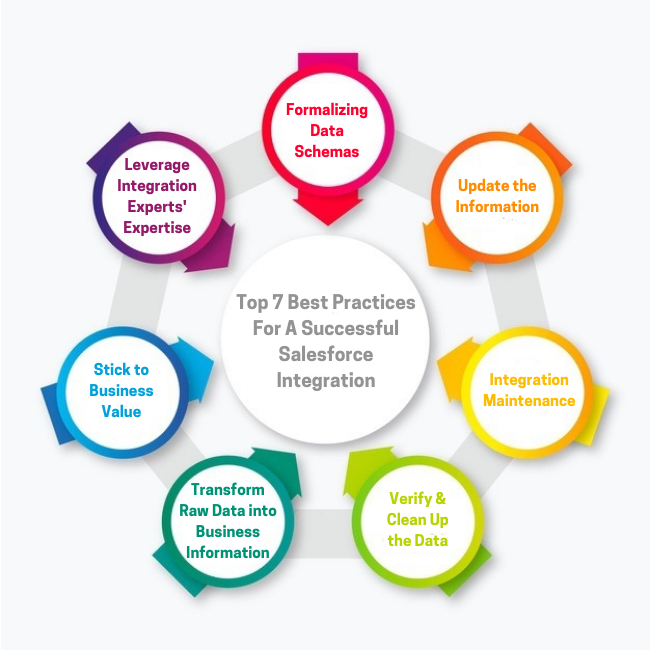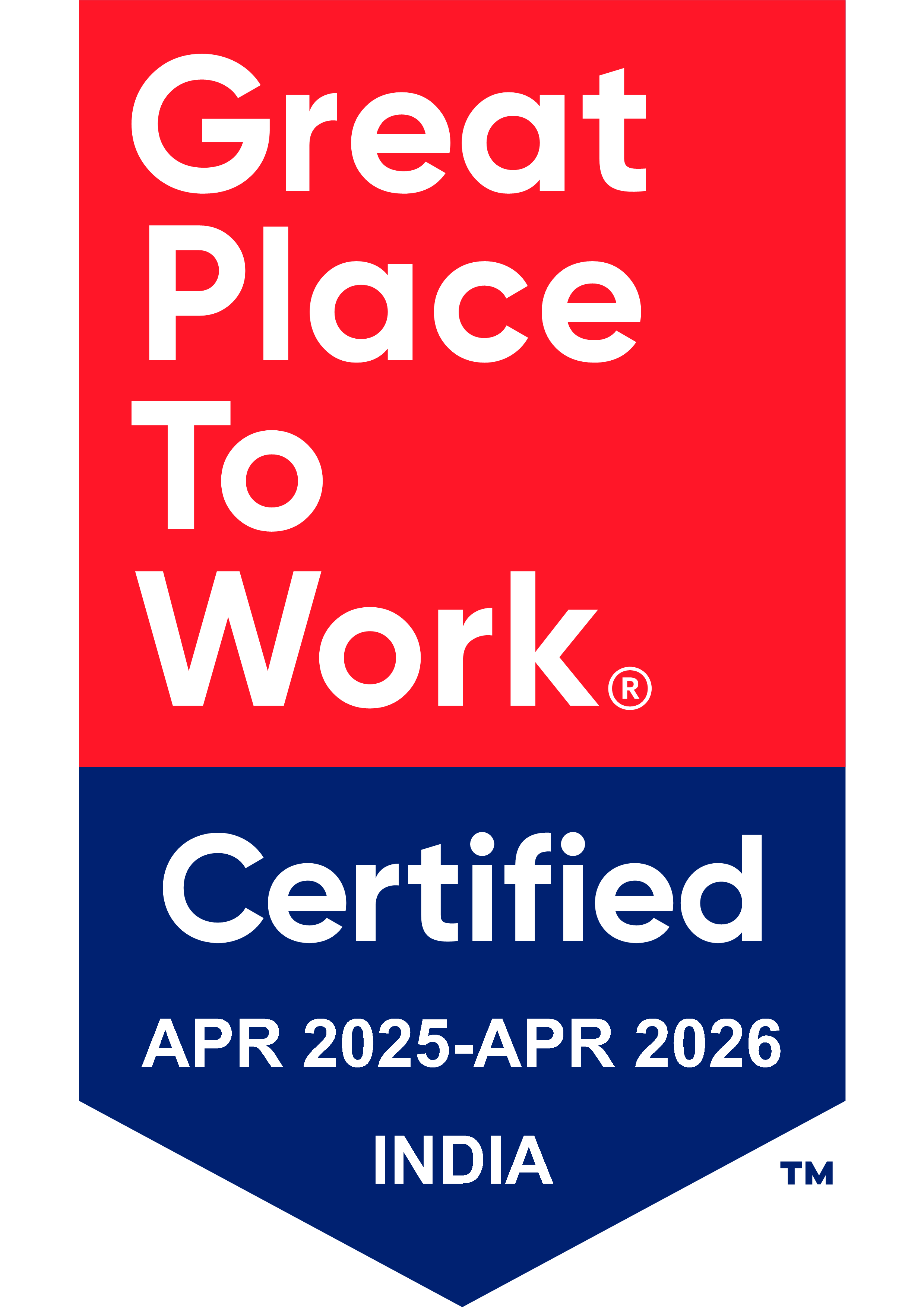Posted On:
Successful Salesforce Integration - Top 7 Best Practices
Integration and migration of Salesforce can be a headache if you're not familiar with the process. Without a thorough understanding and detailed planning, this can lead to unwanted situations and failures. In this article, you'll explore top 7 best practices for Salesforce integration that can ensure a smooth transition:

1. Formalizing Data Schemas
Custom objects, data fields, and tables created individually must align with the integration environment across all applications. It should also be visible to other users. For data standardization, it is best to start by defining initial data schemas and the number of possible future subsequent changes.
2. Update the Information
The information should be updated regularly, perhaps in real-time. Consider updating it to stay up-to-date with your view.
3. Integration Maintenance
The integration process requires maintenance even when it is well defined, for instance, additional tables, changes in data structures, etc. Without someone taking responsibility for the long-term success of the integration initiative, it is likely to fail sooner or later. Maintaining your integration plan with up-to-date updates and keeping a budget in place can help you to improve upon the success factor.
4. Verify and Clean Up the Data
Performing data cleansing and verification as per the requirements of your industry is essential to avoid errors. Hence why, you double-check the names, addresses, and e-mail details of your prospects and customers by default. But further down the line, there are different baseline requirements, inputs/outputs, and best practices for data quality management within each industry. Only advanced data integration tools are capable of cleansing data for precise components. As a suggestion, consider the Apatar Data Integration application for Name, Address, and E-mail Verification features.
5. Transform Raw Data into Business Information
Information applicable across the enterprise providing business decision-making is typically sought after by business users. Thus, raw data must be aggregated, filtered, enriched, and summarized. On top of that, involving Executives in strategizing the raw data transformation is crucial to enable a business analytic with appropriate business data models and views.
6. Stick to Business Value
No matter what, the integration process should align with your business processes and bring value. Because if it doesn't, it's pointless to create even a complex integration model.
7. Leverage integration experts' expertise
Integrations done poorly may result in wasted resources, data loss, errors, and user dissatisfaction. The best way to avoid this is to hire Salesforce Integration Experts to help you deliver intelligent insights and improve your customer experiences.
HyTechPro, as a Partner
HyTechPro is a global IT service provider unleashing the full potential of businesses, revamping their process, and assisting in managing their products, customers, employees, and partners. Our Salesforce Customer Satisfaction (CSAT) of 9.64/10 is a testimony to the success we have delivered to our customers.




Comments